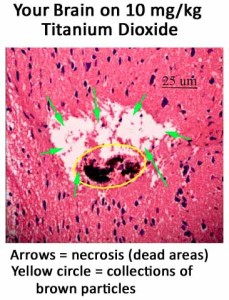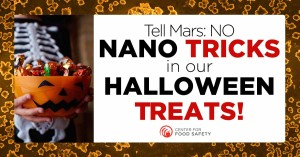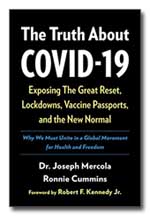 Journal of Biomedical Materials Research Part A. 2014 Feb; 102(2): 470-8.
Journal of Biomedical Materials Research Part A. 2014 Feb; 102(2): 470-8.
Titanium dioxide is a naturally occurring white powder approved by the FDA. It is used as a white coloring in many products we use every day such as toothpaste, sunscreen, cosmetics, and candy. For years the Feingold Association has considered titanium dioxide an acceptable ingredient and natural coloring, specifically mentioning it in the Foodlist in products such as cheese, cottage cheese, and mayonnaise, where it may have been listed as “artificial color” on the ingredient label.
So what happened?
What happened is that the industry has taken this natural material and created ultra-fine particles called nanoparticles (NP). These NPs have taken over the industry and that is what you may find now in your cosmetics, foods, toothpaste, candy, paints, aerosols, etc.
Ze et al exposed mice to various levels of the TiO2 NP (via their noses) for 90 consecutive days, after which their brain injuries and the related changes in “gene expression” were investigated.
NOTE: Although genes are often called the “blueprint” of everything we are, they can be turned on and off, up-regulated, down-regulated, etc., by things we are exposed to in the environment.
Ze’s group found that 249 genes were affected by the titanium dioxide NP – these genes are the ones involved in the immune system, memory, learning, brain development, DNA repair, and other normal brain cell activities. They identified gene “markers” for brain damage caused by this chemical.
Ze concluded that “application of TiO2 NPs should be carried out cautiously.” Cautiously? How about not at all? Is brain damage a price we are willing to pay for smooth sunscreen and cottage cheese?  The Center for Food Safety doesn’t think so, and in 2014 they ran a Halloween campaign inviting people to write to Mars asking them to remove both food dyes and titanium dioxide nanoparticles. Maybe by next Halloween there will have been some changes.
The Center for Food Safety doesn’t think so, and in 2014 they ran a Halloween campaign inviting people to write to Mars asking them to remove both food dyes and titanium dioxide nanoparticles. Maybe by next Halloween there will have been some changes.
NOTE: Update 2023: It is now almost 10 years later, and our foods (and Halloween treats) continue to be laced with all the same artificial food dyes including Titanium Dioxide.
Some other studies on TiO2 NP
- Chen 2016: Influence of silver and titanium dioxide nanoparticles on in vitro blood-brain barrier permeability. (brain damage)
- Colnot 2022: Chronic maternal exposure to titanium dioxide nanoparticles alters breathing in newborn offspring. (breathing)
- Cruz-rosa 2023: Neurotoxicity and oxidative stress development in adult Atya lanipes shrimp exposed to titanium dioxide nanoparticles. (behavior change & oxidative stress)
- Ferrante 2023: DNA damage and apoptosis as in-vitro effect biomarkers of titanium dioxide nanoparticles (TiO2-NPs) and the food additive E171 toxicity in colon cancer cells: HCT-116 and Caco-2. (cell damage, mitochondrial damage)
- Gao 2012: Ovarian dysfunction and gene-expressed characteristics of female mice caused by long-term exposure to titanium dioxide nanoparticles. (ovary damage)
- Grissa 2015: Anemia and genotoxicity induced by sub-chronic intragastric treatment of rats with titanium dioxide nanoparticles. (anemia, blood cell & bone marrow damage)
- Grissa 2016: The effect of titanium dioxide nanoparticles on neuroinflammation response in rat brain (brain damage)
- Hong 2016: Titanium dioxide nanoparticle-induced dysfunction of cardiac hemodynamics is involved in cardiac inflammation in mice. (heart damage)
- Issa 2022: Perinatal exposure to foodborne inorganic nanoparticles: A role in the susceptibility to food allergy? (babies, food allergy)
- Jin 2021: Environmental titanium exposure and reproductive health: Risk of low birth weight associated with maternal titanium exposure from a nested case-control study in northern China. (babies, low birth weight)
- Li 2013: Molecular mechanisms of nanosized titanium dioxide-induced pulmonary injury in mice. (lung damage, cell damage)
- Li 2021: Food-grade titanium dioxide particles decreased the bioaccessibility of vitamin D3 in the simulated human gastrointestinal tract. (digestion, vitamin D3)
- Liu 2016a: Lung inflammation caused by long-term exposure to titanium dioxide in mice involving in NF-κB signaling pathway. (lung damage)
- Mansouri 2016: Histopathological effects following short-term coexposure of Cyprinus carpio to nanoparticles of TiO2 and CuO (fish – hyperactive, convulsions, kidney & liver damage)
- Rahman 2016: Toxicogenomics analysis of mouse lung responses following exposure to titanium dioxide nanomaterials reveal their disease potential at high doses. (lung damage)
- Sheng 2013: Cardiac oxidative damage in mice following exposure to nanoparticulate titanium dioxide. (heart damage)
- Shimizu 2009: Maternal exposure to nanoparticulate titanium dioxide during the prenatal period alters gene expression related to brain development in the mouse. (brain damage)
- Song 2016: Unraveling the neurotoxicity of titanium dioxide nanoparticles: Focusing on molecular mechanisms. (behavior, emotional damage)
- Song 2016a: Contribution of oxidative stress to TiO2 nanoparticle-induced toxicity.
- Sun 2012: Pulmotoxicological effects caused by long-term titanium dioxide nanoparticles exposure in mice. (lung damage)
- Tada-Oikawa 2016: Titanium dioxide particle type and concentration influence the inflammatory response in Caco-2 cells. (gastrointestinal cell damage)
- Takeda 2009: Nanoparticles transferred from pregnant mice to their offspring can damage the genital and cranial nerve systems. (brain damage, reduced sperm)
- Umezawa 2012: Effect of fetal exposure to titanium dioxide nanoparticle on brain development – brain region information. (brain damage, dopamine system)
- Yao 2021: Toxic effects of TiO2 NPs in the blood-milk barrier of the maternal dams and growth of offspring. (babies, breastfeeding)
- Younes 2015: Subacute toxicity of titanium dioxide (TiO2) nanoparticles in male rats: emotional behavior and pathophysiological examination. (Liver, lung, brain damage; increased anxiety)
- Ze 2013: Molecular mechanism of titanium dioxide nanoparticles-induced oxidative injury in the brain of mice. (brain damage)




















